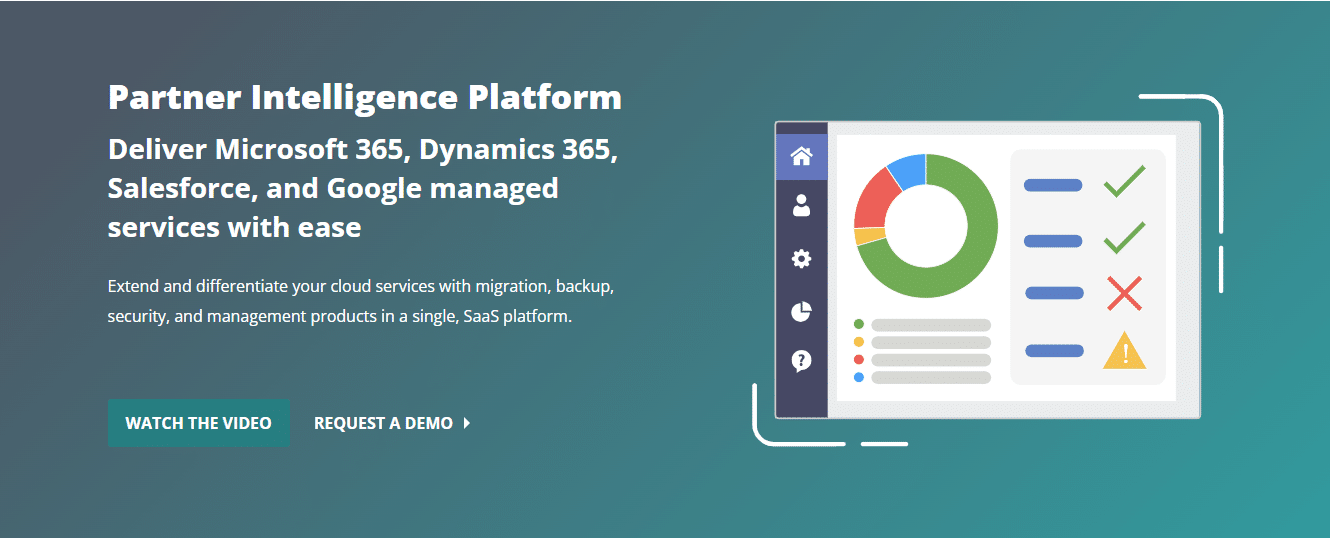Why Reporting Matters for MSPs: Driving Customer Satisfaction and Business Growth

As a Managed Service Provider (MSP), your clients choose to partner with you for a variety of reasons – perhaps it’s your expertise in their industry, your work with advanced technology, or your dedication to supporting their unique business needs. Regardless of what you bring to the table, one thing all clients can agree on is the importance of transparency when it comes to your services.
As an MSP, it’s your responsibility to provide reliable technology solutions and support to your clients – in fact, reliability is one of the most important factors when it comes to selecting any new technology. Visibility and transparency in the work you are doing on your customers’ behalf are crucial to demonstrating your reliability and building trust. This doesn’t mean tracking your every move, but rather providing regular and informative reporting to demonstrate the value of your services to your customers while helping them get the most out of your partnership.
In this blog post, we’ll explore the value of reporting for your business and how to add visibility to your business to help drive customer satisfaction and business growth.
The Value of Reporting for MSPs
For MSPs looking to deliver more transparency and visibility to their customers, building reporting into your business is a must. There are four important reasons why reporting drives customer satisfaction: it proves your value, quells customer fears, facilitates planning of long-term IT spending, and identifies performance issues in your client environments.
Let’s get into more detail about how each of these will help you continue to expand your business.
Prove Value
In today’s uncertain economic climate, businesses are increasingly focused on reducing expenses. In fact, nearly 60% of CFOs cite cost optimization as one of their top concerns in the next six months. If you don’t want your business to fall into an organization’s cost reduction initiative, it’s essential that you’re able to provide your clients with tangible value and demonstrate that your services are working effectively. Failure to do so could put your customer relationship and business at risk.
Quell Customer Fears
Data protection and recovery are top priorities for businesses of all sizes these days. With cyber threats on the rise and more sensitive information being stored digitally, your clients need to know their data is secure and can be recovered quickly, no matter what happens. The easiest way to put their mind at ease is by offering validation that their information is safe and sound. Providing regular reports on your clients’ data protection status – for example, a report that highlights backup success rates or recovery times – demonstrates not only your commitment to their security but should give them the peace of mind they need to focus on their other business objectives.
Give your clients peace of mind: Ransomware Protection Toolkit for MSPs
Plan Long-Term IT Spending
The visibility offered by reporting can inform your client’s long-term spending. For example, if your services are consistently being disrupted due to out-of-support operating systems or slow, insecure integrations, it might be time to recommend an upgrade. After all, half of SMBs expect technology partners to proactively suggest new technologies. Even if you aren’t on the market to upgrade tech for your clients, it’s a good opportunity to build more trust by identifying potential concerns. For example, if your reports show more data is being backed up each month, it’s time to flag the possibility that they may be maxing out their vendor storage capacity.
Identify Performance Issues
Reporting also gives you another touchpoint with your client’s environment, helping you better monitor and maintain the overall health of your client’s network. For example, if you pull a backup report and notice some of the backups are failing, you can proactively investigate and resolve whatever is causing the failure, without involving the customer. This also allows you to show tangible progress over time, showing fewer failures over the course of weeks, months, or years, or backing up more and more data with the same level of success.
Reporting Drives Revenue for MSPs
Reporting can do more than just demonstrate the value of your services to clients; it can also drive revenue for your MSP business. While most customers simply need confirmation that their systems are working as intended, some may want more detailed reports. These customers represent an opportunity for a new stream of revenue, as they may be willing to pay for additional reporting capabilities, such as regular health checks or monthly updates on their services.
By automating your reporting process, you can create regular touchpoints with your clients without adding to your workload. This not only saves time but also increases the value of your services in the eyes of your clients. The more sophisticated your reporting, the more revenue it can bring in. Clients are willing to pay for added value, and reporting is an excellent way to deliver that value.
Ultimately, a happy customer is a loyal customer. By providing detailed and valuable reports, you can increase client satisfaction and build long-term relationships that drive business growth. A business that grows without much effort on your part is the ultimate goal, and reporting can help you achieve it.
Watch now: How to Grow Your Business with a Collaboration Security Practice
How to Build Reporting into Your MSP Business
It’s evident that incorporating reporting into your business strategy can be a powerful addition, for both you and your customers, to your operating model. However, building out reporting from scratch can be time-consuming and daunting. Fortunately, with the right partner, reporting can be an automated or scheduled process that requires minimal effort from you.
AvePoint Elements, a partner-centric solution that enables MSPs to manage multiple tenants in one place, recently released a new Report Center that makes it easy to create and automate reporting for your clients.
From within the Report Center, you can build visual and easy-to-understand reports, perfect for customers who won’t waste time making sense of a bunch of numbers. These reports can be configured exactly how you want, with options to include (or not include) key metrics such as how much data you’re protecting in application, performance over time, and failure rates. These metrics are key for demonstrating to your customer the value you bring, but also showing trends and progress over time.

Elements offers further reporting capabilities to add value for clients, like web-based reporting for review or a history of reports to review trends and improvements over time. What’s more, the scheduling capabilities in Elements can save you time, allowing your team to configure a report once and send it regularly at whatever cadence you’d like.
With the new reporting capabilities in Elements, MSPs can increase visibility with ease, giving customers peace of mind and differentiating yourself from competitors in the market.
If you love the idea of reporting but would prefer raw data to better manipulate it into your existing reports, Elements has got you covered. Learn how you can use Elements APIs to build custom reports that need your customers’ needs.
Get Started with AvePoint Partner Program
Elements is just one of many services and solutions AvePoint offers to help MSPs increase visibility and transparency to grow their business. Our solution suite includes an array of robust technologies – from access monitoring to provisioning and migration technologies – that help you build a business around securely managing your customers’ collaboration ecosystems. Start fueling your business growth by becoming an AvePoint partner today.
Ready for more tips on how to increase visibility and drive efficiencies in your management processes? Get our free guide – Maximizing Your SaaS Potential – to discover better multi-SaaS management practices.
Kayla Haskins is a Content Marketing Manager at AvePoint, writing about all things cloud collaboration – including Power Platform, Microsoft 365, Google Workspace, and Salesforce. An advocate of operational governance and process automation, Kayla creates content that helps businesses manage technology to drive efficiencies in the modern workplace and make work/life balance a reality.







